On the Avenue of Sphinxes
The Temples of Luxor and Karnak are in the town of Luxor, literally. In fact, when excavations began to reveal the enormity of buried evidence of Egypt’s ancient past, parts of the town were removed in order to dig beneath them. Even now, demolition of buildings and roads continues to make way for the restoration of the Avenue of Sphinxes. A stone-paved road lined on both sides by, originally, 1350 of the human-headed lion statues, it runs for 3 kilometers significantly below the level of present-day Luxor, in a straight line connecting Luxor Temple to the Temples of Karnak. Located on the eastern bank and parallel to the Nile, it was used in antiquity for a festival once a year.
Luxor Temple
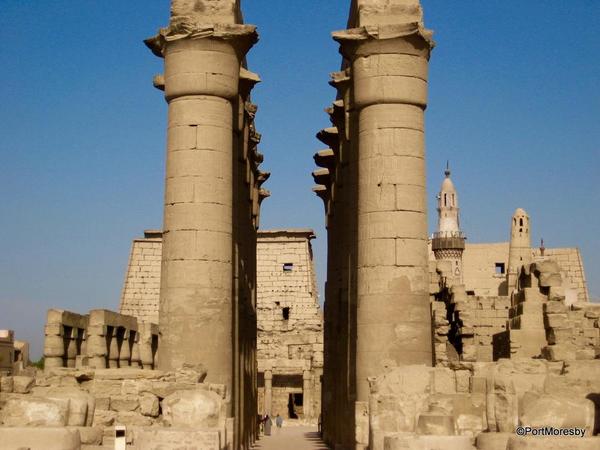
Above, the 16 meter stylized papyrus columns of Amenophis III.
Abu al-Haggag Mosque (above & below)
The most vivid example of building that took place above old monuments in Luxor is the 13th century Abu al-Haggag Mosque, still in daily use and built atop Luxor Temple. When the temple was excavated the original doorway into the mosque was left suspended above the temple courtyard, unusable as a doorway but gloriously telling. A new entry was built with stairs on the opposite side. It’s only one of several houses of worship, including a Roman temple and Christian churches, an early one still unexcavated beneath the mosque, built within the confines of the ancient temple and is testament to the continuous worship that has taken place on the site for millennia. 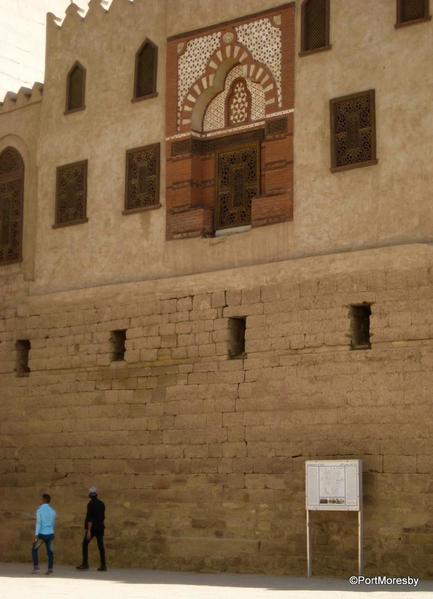
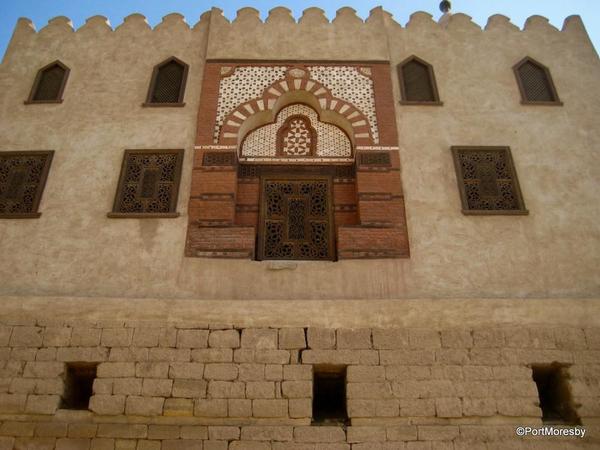
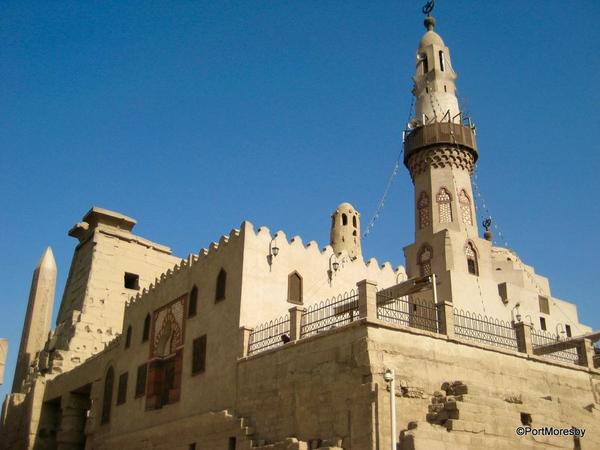
Below, colossal statues of Ramses II in the First Court.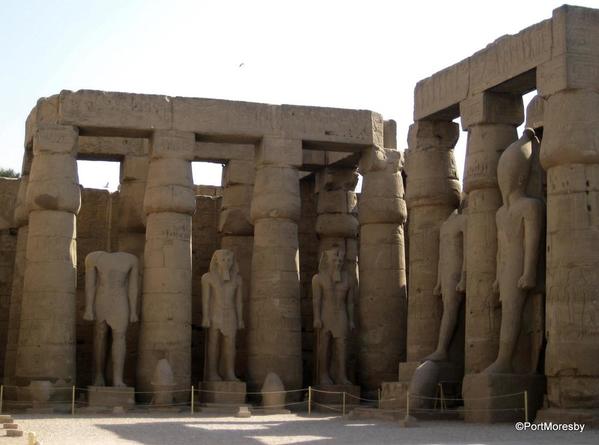
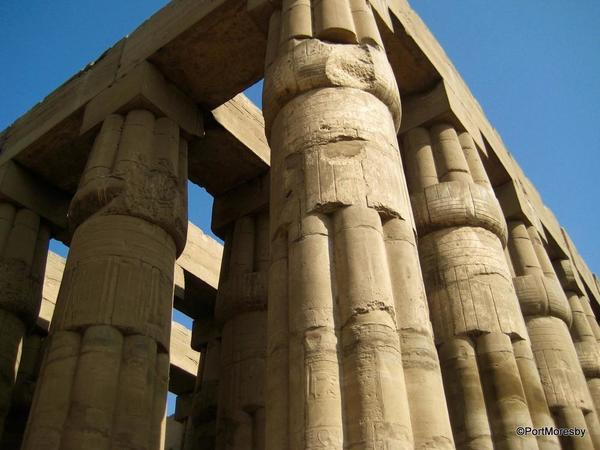
The papyrus bundle columns of the Hypostyle Hall, above & below.
The west side of the Sun Court, below, with the Nile beyond.
Evidence of Roman occupation, a 4th century A.D. fresco, below.
Colossal Seated Statue of Ramses II
Restored section of Avenue of Sphinxes through the town toward Karnak.
The Temples of Karnak
The site of the Karnak Temples is huge. The most famous of them is the temple of the god Amun, begun about 1950 B.C. and continued to grow for the next 1300 years. It was an enormously wealthy institution, at the height of its power holding as much as a third of the land of Egypt with all that implied - ships, cattle, slaves and tribute from all the cities in Africa and Asia ruled from Thebes, now Luxor, capital of Egypt for much of the 18th dynasty (about 1550 to 1290 B.C.).
With the Nile behind me, approaching the first pylon, the massive gateway
to the Temple of Amun, the way flanked by ram-headed sphinxes.
The Great Forecourt, below.
Above center, a colossal granite statue of Ramses II
in the forecourt at the entrance to the Great Hypostyle Hall, below.
Relief of Seti I (reigned 1290 to 1279 B.C.) below on right, in the Hypostyle Hall.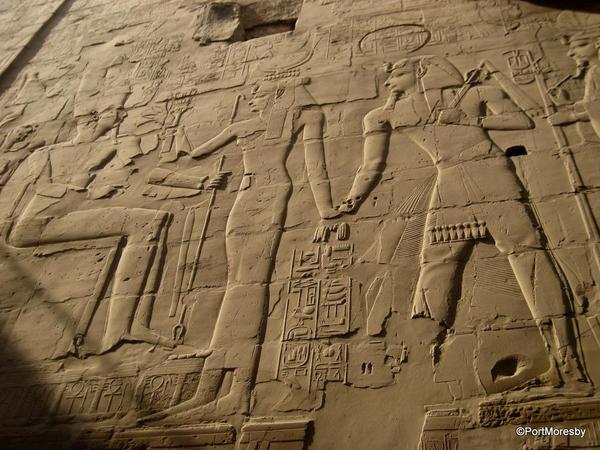
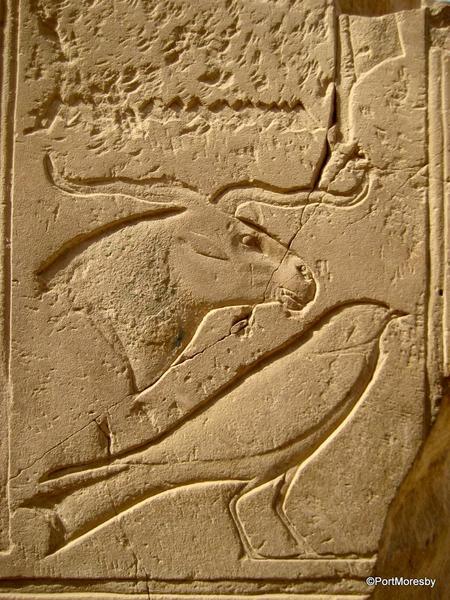
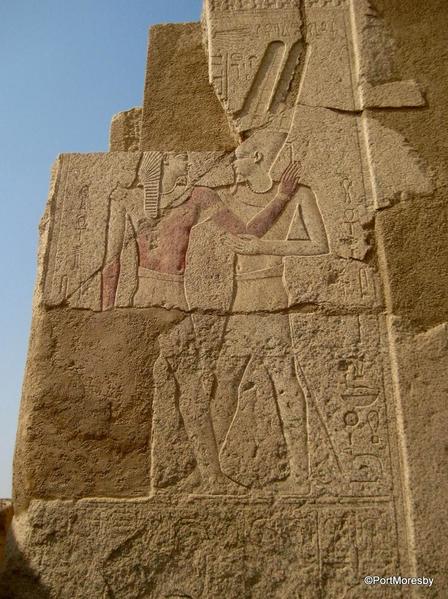 Pharoah, with Amun Re, right.
Pharoah, with Amun Re, right.
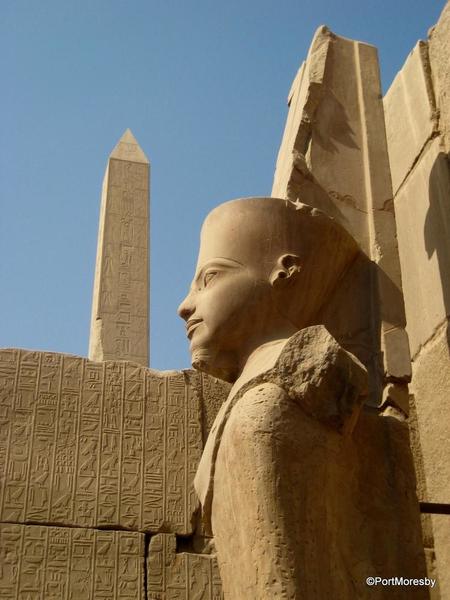
Above & below, depiction of god Amun from the reign of Tutankhamun.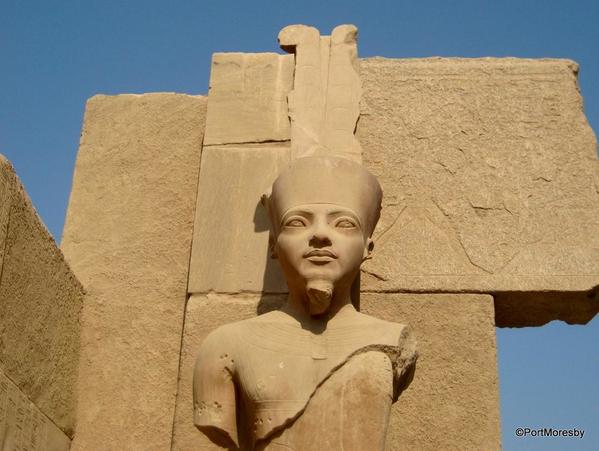
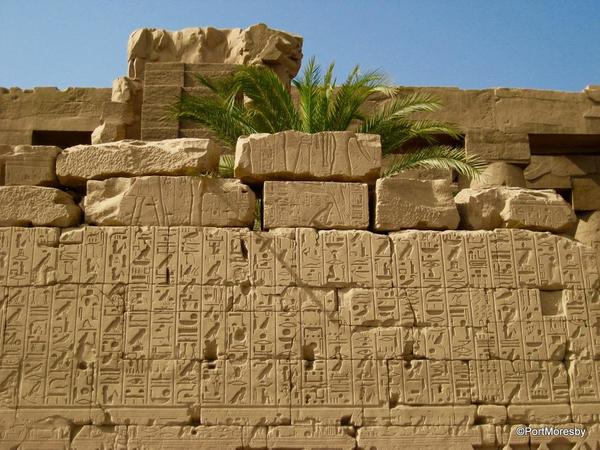
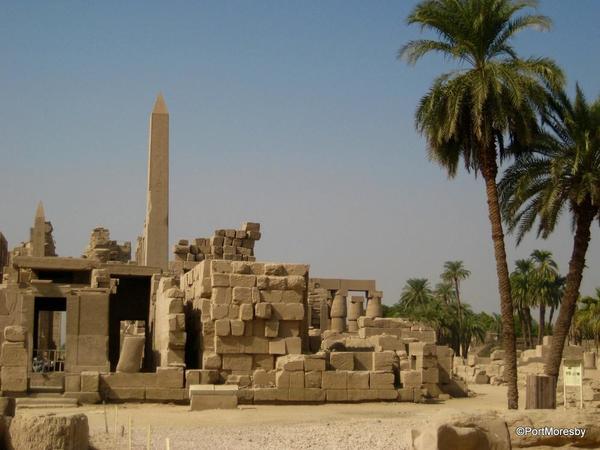 Queen Hatshepsut's obelisk between pylons 4 & 5.
Queen Hatshepsut's obelisk between pylons 4 & 5.
It’s difficult for me to imagine how the temples and monuments of ancient Egypt can have been built. And hard to grasp the effort required to excavate them from the desert that buried them. And surprising how casually they now seem to be cared for, all these thoughts at once while looking at one after another during the weeks I was in the country. There didn't seem to be room in my imagination to accommodate the history, as well, except in snippets supplied by several guides on the route along the Nile from Cairo to Aswan. If I’m lucky enough to return to Egypt I hope to devote more attention to the intellectual, as well as the purely esthetic, but in the meantime I’m just thrilled to have seen even things I cannot quite grasp.
All episodes of 'PortMoresby in Egypt' can be found here.
And others of PortMoresby’s contributions here.

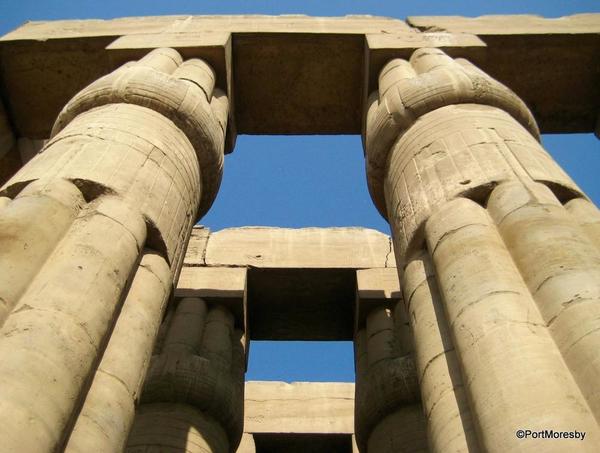

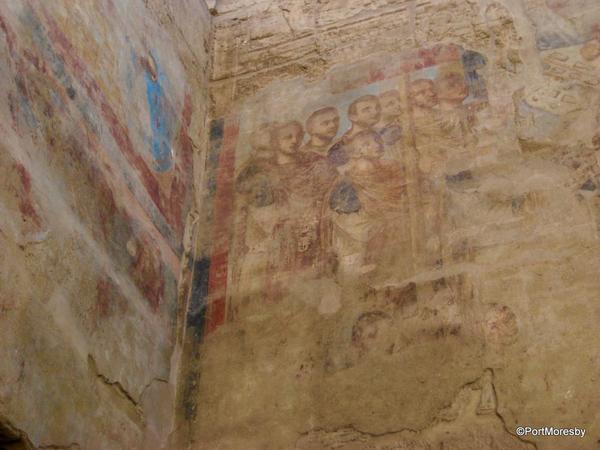
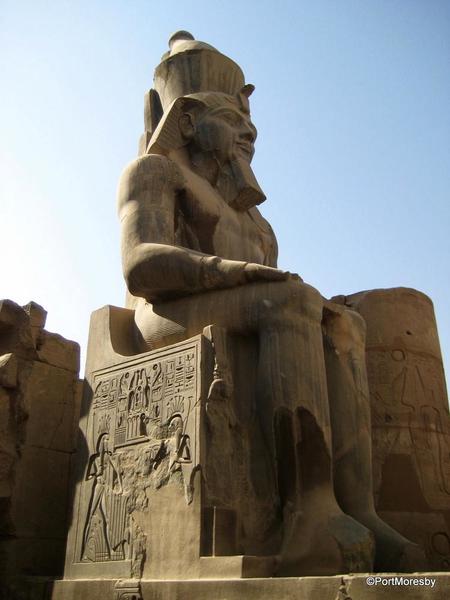
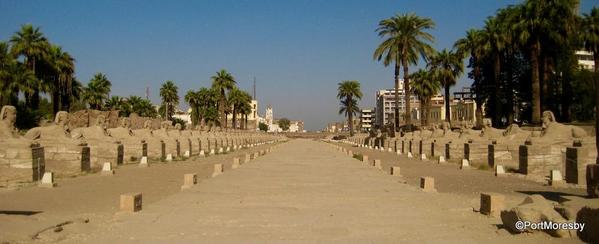
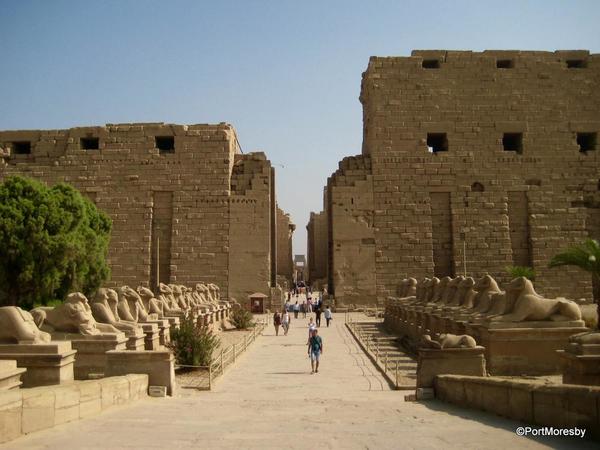


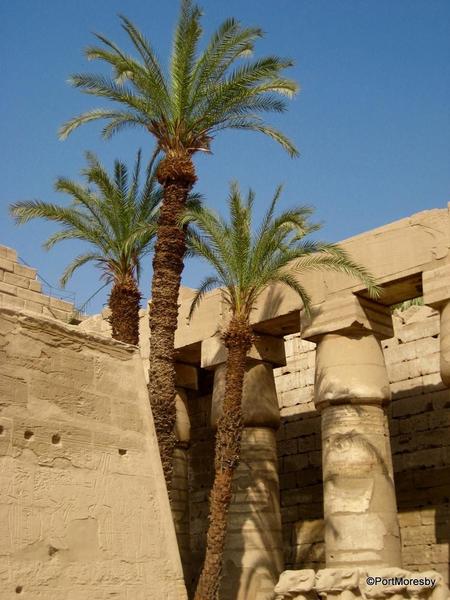
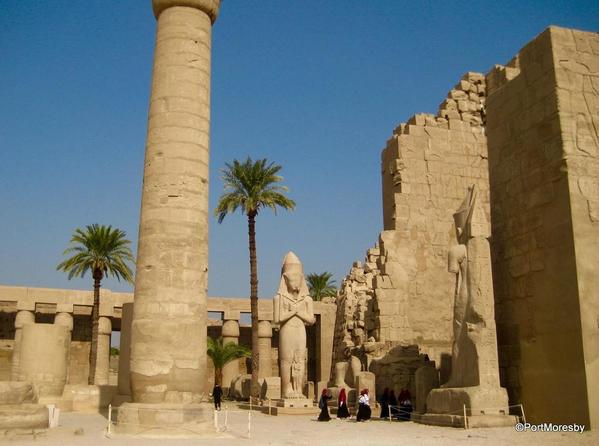
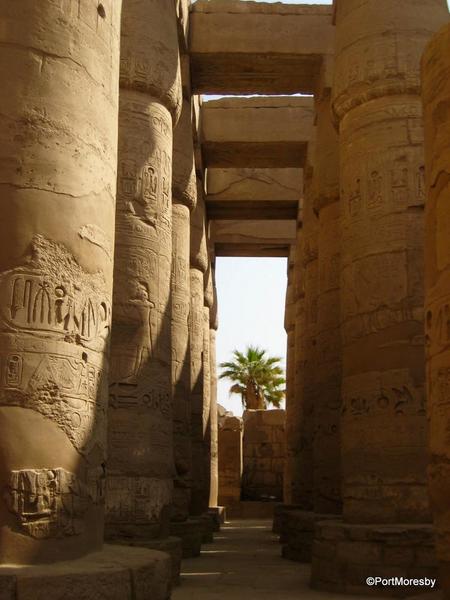
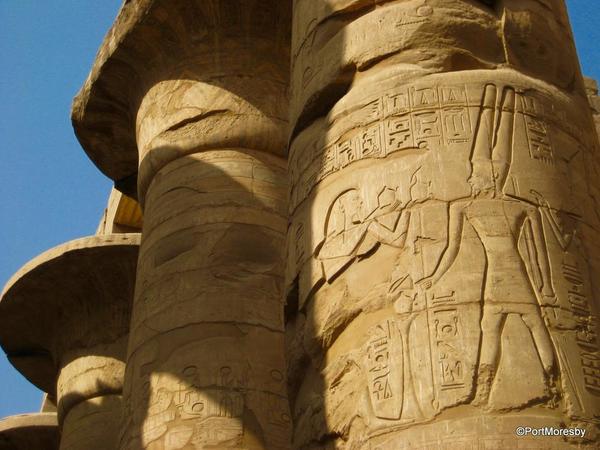
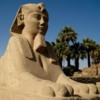
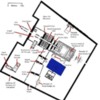

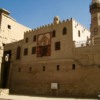











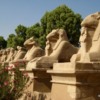











Comments (5)